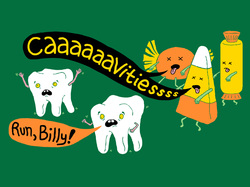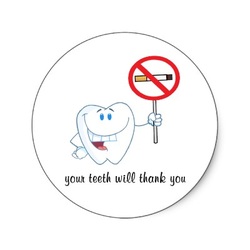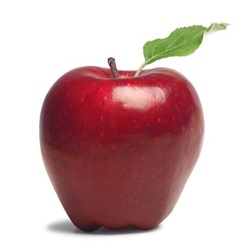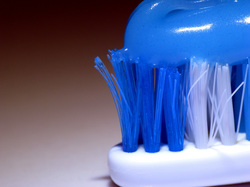
Halloween is only about a week away! While the notion of children consuming so much candy can often be quite scary, there are some recommendations that can make Halloween less of a nightmare for their teeth.
The American Dental Association (ADA) has compiled a list of ten recommendations to help children maintain good oral health during Halloween and the rest of the holiday season.
Here are the ten recommendations from their website.
The American Dental Association (ADA) has compiled a list of ten recommendations to help children maintain good oral health during Halloween and the rest of the holiday season.
Here are the ten recommendations from their website.
- Consume Halloween candy and other sugary foods with meals.
Saliva production increases during meals and helps neutralize acids produced by bacteria in your mouth and helps rinse away food particles. - Avoid hard candy and other sweets that stay in your mouth for a long time.
Besides how often you snack, the length of time food is in your mouth plays a role in tooth decay. Unless it is a sugar-free product, candies that stay in the mouth for a long period of time subject teeth to prolonged acid attack, increasing the risk for tooth decay. - Avoid sticky candies that cling to your teeth.
The stickier candies, like taffy and gummy bears, take longer to get washed away by saliva, increasing the risk for tooth decay. - Drink more water.
Consuming optimally fluoridated water can help prevent tooth decay. If you choose bottled water, check the label for the fluoride content. - Maintain a healthy diet and make sure the meals you eat are nutritious.
Your body is like a complex machine. The foods you choose as fuel and how often you "fill up" affect your general health and that of your teeth and gums. - Avoid beverages with added sugar such as soda, sports drinks or flavored waters.
When teeth come in frequent contact with beverages that contain sugar, the risk of tooth decay is increased. - Chew gum that has the ADA Seal.
Chewing sugarless gum for 20 minutes after meals has been shown to reduce tooth decay, because increased saliva flow helps wash out food and neutralize the acid produced by dental plaque bacteria. - Brush your teeth twice a day with an ADA-accepted fluoride toothpaste.
Replace your toothbrush every three or four months, or sooner if the bristles are frayed. A worn toothbrush won't do a good job of cleaning your teeth. - Clean between teeth daily with floss or an interdental cleaner.
Decay-causing bacteria still linger between teeth where toothbrush bristles can't reach. Flossing helps remove plaque and food particles from between the teeth and under the gum line. - Visit an ADA-member dentist for more information on maintaining your oral health.
Source:




 RSS Feed
RSS Feed
